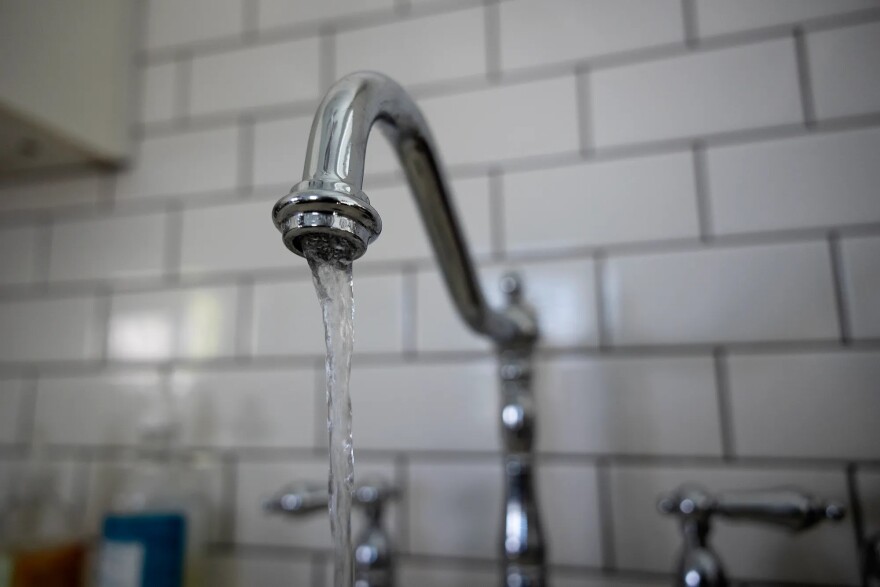Per- and poly-fluoroalkyl substances, or PFAS for short, are unhealthy chemicals in pretty much everything, from non-stick pans and household cleaners to firefighting foam. They’ve even been found in our blood.
Now, a study out of the U.S. Geological Survey finds these chemicals are in our tap water too.
There are thousands of types of PFAS, also called “forever chemicals” because they break down so slowly.
The study found varying levels of PFAS in tap water in nearly half the U.S.
Los Angeles and southern California are among the urban areas with the most types of PFAS. You can check out an interactive map of the data in the study here.
More research needed on health impacts
A few PFAS chemicals have been linked to serious health problems, including some types of cancer and fertility issues, according to the Environmental Protection Agency, or EPA. But more research is needed to determine how dangerous they are and what specific health issues they may cause.
“There is growing evidence of health effects, but I still think in terms of relative risk, it's pretty clear it's not up there with your arsenic, nitrate, disinfection byproducts,” said Greg Pierce, the director of the Human Right to Water Solutions Lab at UCLA.
There are some 98 drinking water contaminants legally regulated by the EPA and the agency is in the process of establishing legal limits for certain PFAS chemicals. In March, the EPA proposed new legal limits on two of the main PFAS chemicals, PFOS and PFOA, at four parts per trillion each in drinking water. The current non-legal health advisory is far less strict, setting dangerous exposure at 70 parts per trillion.
'Not surprising' that PFAS is in the water
The study analyzed water samples from taps at 716 locations – 269 from private wells and 447 from public sources – between 2016 and 2021. Their analysis found at least one PFAS chemical in close to half the US.

“It’s not terribly surprising that PFAS are in drinking water everywhere. We’ve been using these chemicals for decades without much care about where they end up, and once in the environment, they’re essentially there for good, because their degradation rates in the environment are negligible,” Dan McCurry, a USC engineering professor whose work focuses on water purification and recycling, wrote in an email to LAist.
He said he wouldn’t be surprised if a study found some type of PFAS in 100% of water supplies.
“PFAS have been found in polar bear blood, for instance, which is pretty far from the nearest Teflon factory,” McCurry wrote.
But the concentrations of PFAS are what does matter — and the study found a wide variety from small traces to concentrations far above the current health advisory and most higher than the proposed rules.
Alarm should focus on enforcing existing regulations
Pierce said while PFAS needs to be taken seriously, the alarm around it is somewhat misplaced.
"The [PFAS] hysteria is, especially in water, pretty overblown, distracting us from addressing a lot of other issues in water quality that we already have that are more damaging to health," Pierce said.
In an analysis of water systems across L.A. County, for example, Pierce’s research found drinking water wells in the Antelope Valley exceeded maximum safe levels for contaminants such as arsenic and nitrates, which have been shown to cause certain cancers and other severe health problems.
"I don't want to say PFAS isn't a concern — I think it is," Pierce said. "But it's also sort of a consequence of most material living standards that people want. It's everywhere. You have levels of contamination in water below health standards for tons of things and the idea that there should be zero of it is ridiculous."
What does it mean for our water supply and bills?
The current technology to eliminate PFAS from water is expensive, which could lead to higher water bills if a federal safety limit is made too stringent and without proper funding behind it, said Pierce.
“The EPA regulations are aggressive, completely not enforceable, and mean a lot of systems are going to go out of compliance with no support to get back into compliance,” Pierce said.
-
It's gonna be Yankees v the Boys in Blue
-
Nonprofit's launching fundraiser to keep it afloat
-
USC study documents what residents want from trees
But as southern California cities turn to using more recycled water to cope with worsening droughts, however, the problem may be partially solved, said McCurry.
“The most common treatment configuration for recycling wastewater involves reverse-osmosis…and reverse osmosis does a very good job of removing PFAS,” said McCurry.
However, the flip side of that is that recycling water means more brine, which needs to go somewhere. In southern California, it’s the ocean, where that brine dilutes and dissipates. But PFAS doesn’t dilute.










